Coastal Hidden Gems of Spain: Beyond Barcelona and Marbella
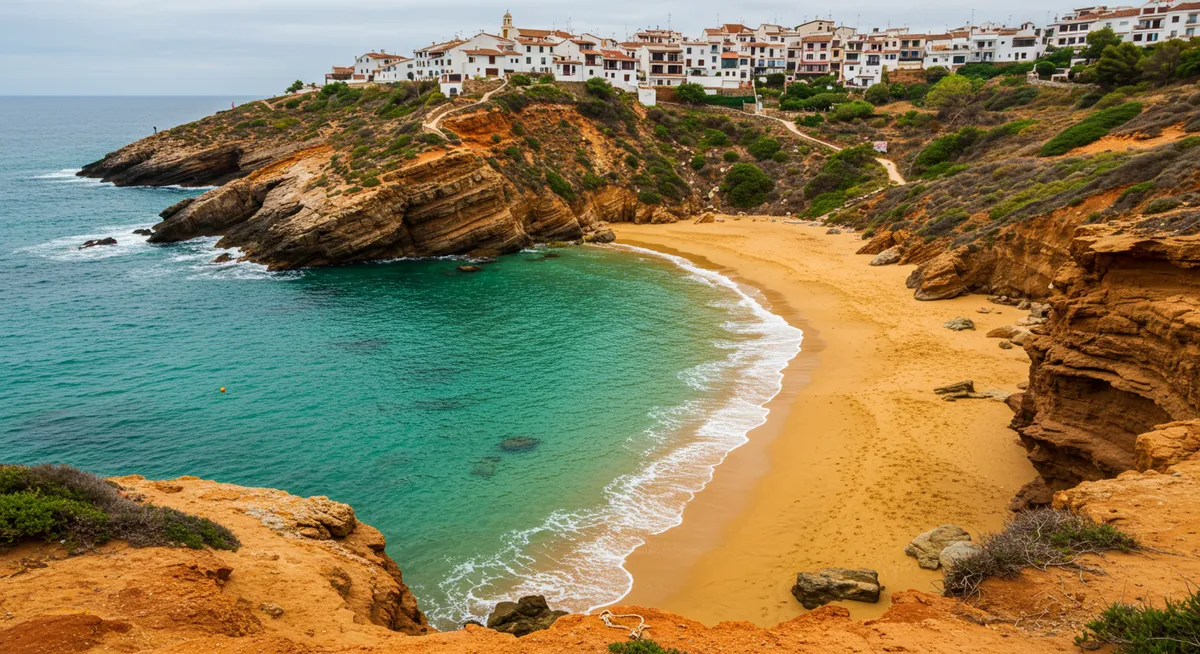
Coastal Hidden Gems of Spain: Beyond Barcelona and Marbella
While Spain's Mediterranean coastline conjures images of crowded resorts and high-rise hotels, the country actually boasts thousands of kilometers of diverse shoreline where authentic fishing villages and historic seaside towns remain remarkably preserved. From the wild Atlantic coast of Galicia to the sun-drenched coves of Andalusia, this guide unveils Spain's most enchanting coastal hidden gems where travelers can experience the authentic charm, culinary delights, and stunning landscapes that have captivated artists and writers for generations—all without battling the crowds that flock to more famous Spanish beach destinations.
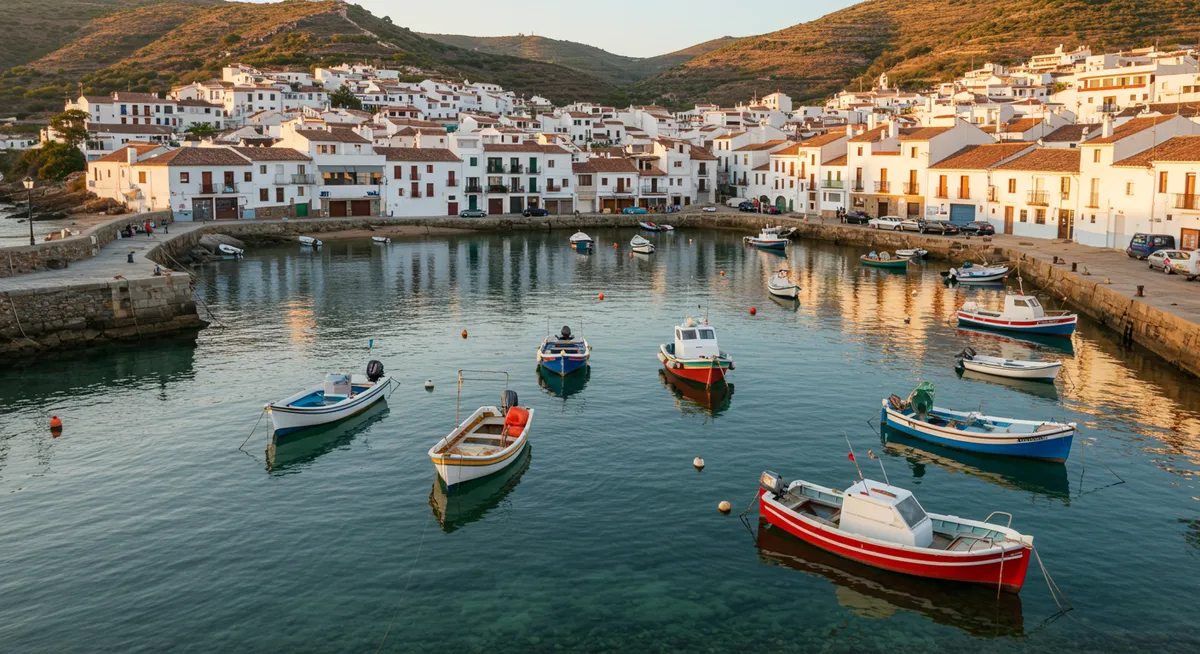
1. Cadaqués: Salvador Dalí's Inspiration
Nestled in a protected bay on Catalonia's rugged Cap de Creus peninsula, Cadaqués stands as one of the Mediterranean's most perfectly preserved white villages. Isolated by mountains that, until relatively recently, made it accessible only by sea, this former fishing community has maintained its distinctive character despite its status as a longtime artist's haven. Salvador Dalí famously spent summers in nearby Port Lligat, drawing inspiration from the otherworldly landscape of twisted rocks, crystalline waters, and the distinctive light that bathes the whitewashed buildings.
What Makes It Special
- Artistic Heritage: Attracted creative luminaries including Salvador Dalí, Pablo Picasso, and Marcel Duchamp
- Distinctive Architecture: Labyrinthine streets of immaculate whitewashed buildings with vibrant blue details
- Dramatic Setting: Located within Cap de Creus Natural Park with its surreal rock formations and hidden coves
- Catalan Culinary Traditions: Excellent seafood restaurants serving authentic regional specialties
Local Experiences
Visit the Salvador Dalí House-Museum in nearby Port Lligat, the artist's former home where the surreal interior design reflects his artistic vision. Hike the coastal trails of Cap de Creus Natural Park, Spain's easternmost point, where wind-sculpted rock formations create landscapes that seem from another planet. Sample traditional Catalan seafood dishes like suquet de peix (fish stew) and fideuà (seafood noodle dish) at family-run restaurants around the village. Rent a small boat to explore the hidden coves and crystal-clear waters that are inaccessible by land.
Getting There
Cadaqués is located on the Costa Brava in northeastern Spain, about 170 km (105 miles) northeast of Barcelona. It's reached via a winding mountain road from Roses, which contributes to its isolation and preserved character. While worth the journey, the drive requires caution, particularly in peak summer months when the narrow road sees increased traffic.
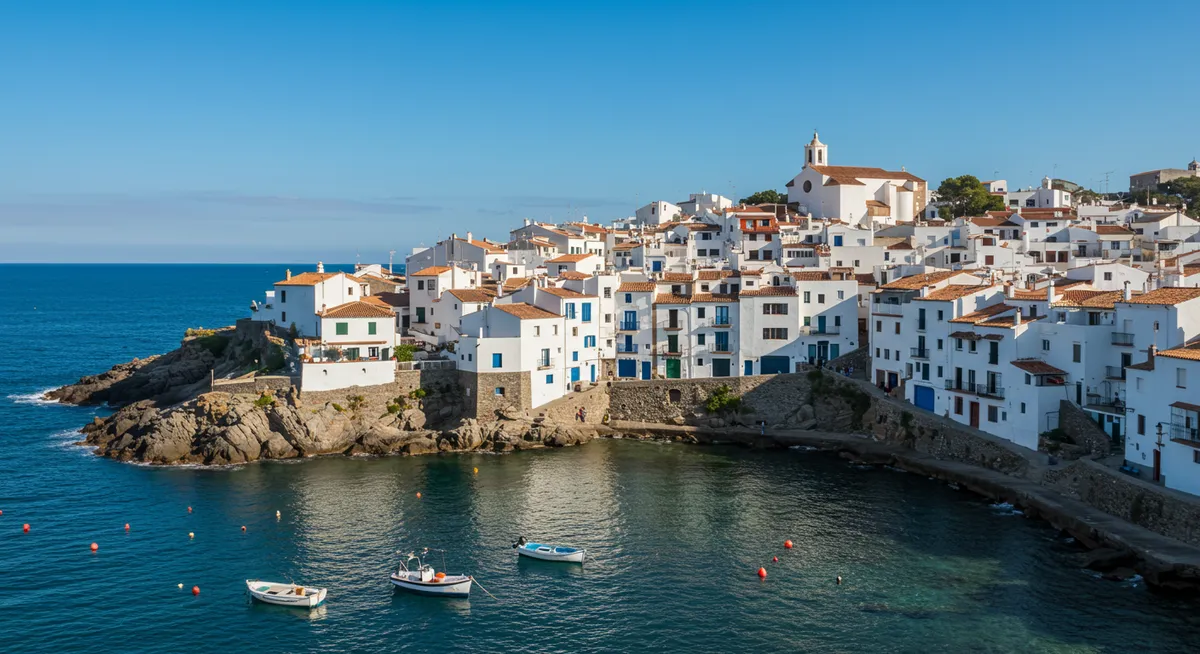
2. Combarro: Galician Stone and Sea
On the wild Atlantic coast of Galicia in Spain's northwestern corner, Combarro presents one of the country's most intriguing cultural landscapes. This small fishing village on the Pontevedra estuary has preserved its traditional stone architecture and unique hórreos (granite granaries on stilts) that line the waterfront. With its perfect blend of sea, stone, and Celtic-influenced culture, Combarro offers visitors a glimpse into Galicia's distinctive maritime heritage rarely experienced by international travelers.
What Makes It Special
- Waterfront Hórreos: Over 30 traditional Galician stone granaries built on pillars along the shoreline
- Cruceiros: Ancient stone crosses at key intersections, reflecting Galicia's deep religious traditions
- Traditional Stone Architecture: Well-preserved granite houses featuring balconies and carved details
- Working Harbor: Active fishing port where traditional practices continue alongside modern techniques
Local Experiences
Wander the narrow cobblestone streets of the historic center, exploring the three distinct neighborhoods each with their own cruceiro (stone cross). Photograph the unique waterfront where hórreos stand on the rocky shore, creating a scene unchanged for centuries. Sample Galician cuisine at local taverns, focusing on seafood specialties like pulpo á feira (octopus with paprika), percebes (goose barnacles), and empanada gallega (Galician pie often filled with tuna or seafood). Visit during the Festa do Carme (mid-July), when local fishermen carry a statue of their patron saint in a maritime procession of decorated boats.
Getting There
Combarro is located in the Rías Baixas region of Galicia, about 7 km (4 miles) from Pontevedra city. It's best reached by car, as public transportation options are limited. The historic village area is pedestrianized, with parking available at the village entrance.
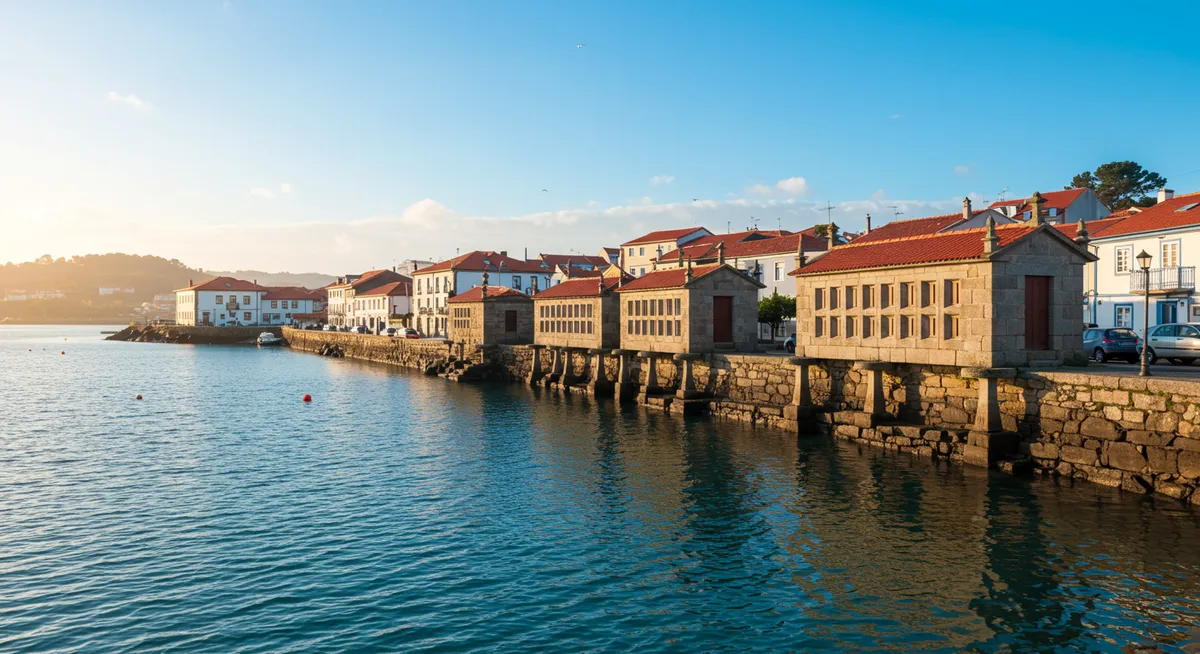
3. Peñíscola: Fortress by the Sea
Rising dramatically from a narrow peninsula on Spain's Orange Blossom Coast, Peñíscola presents one of the Mediterranean's most picturesque walled cities. Dominated by the imposing Templar Castle that once housed Pope Benedict XIII (known as "Papa Luna"), this fortified city appears to grow organically from the rocky promontory, with white houses cascading from the castle walls to the brilliant blue sea below. Despite being in the Valencia region, known for tourism development, Peñíscola has preserved its medieval character and authentic fishing traditions.
What Makes It Special
- Templar Castle: Spectacular 14th-century fortress built by the Knights Templar on Arab foundations
- Complete Medieval Walls: Fully intact fortifications encircling a charming old town
- Dramatic Geography: Built on a rocky tombolo connected to the mainland by a narrow strip of sand
- Filming Location: Featured as Meereen in the Game of Thrones series, adding to its fantasy-like appeal
Local Experiences
Explore the imposing Papa Luna Castle, climbing its ramparts for spectacular views of the Mediterranean and learning about the fascinating history of the antipope who made it his home. Wander the narrow, winding streets of the old town within the walls, discovering hidden plazas and whitewashed houses adorned with flowerpots. Enjoy paella and fresh seafood at restaurants overlooking the fishing port, where boats still bring in the daily catch. Visit the Bufador, a natural sea cave where waves crash through a hole in the rocks, creating impressive sprays during rough seas.
Getting There
Peñíscola is located on Spain's Costa del Azahar in the province of Castellón, about 150 km (93 miles) north of Valencia. It's accessible by car via the AP-7 highway or by train to Benicarló-Peñíscola station followed by a short bus ride. The old town is pedestrianized, with parking available outside the walls.
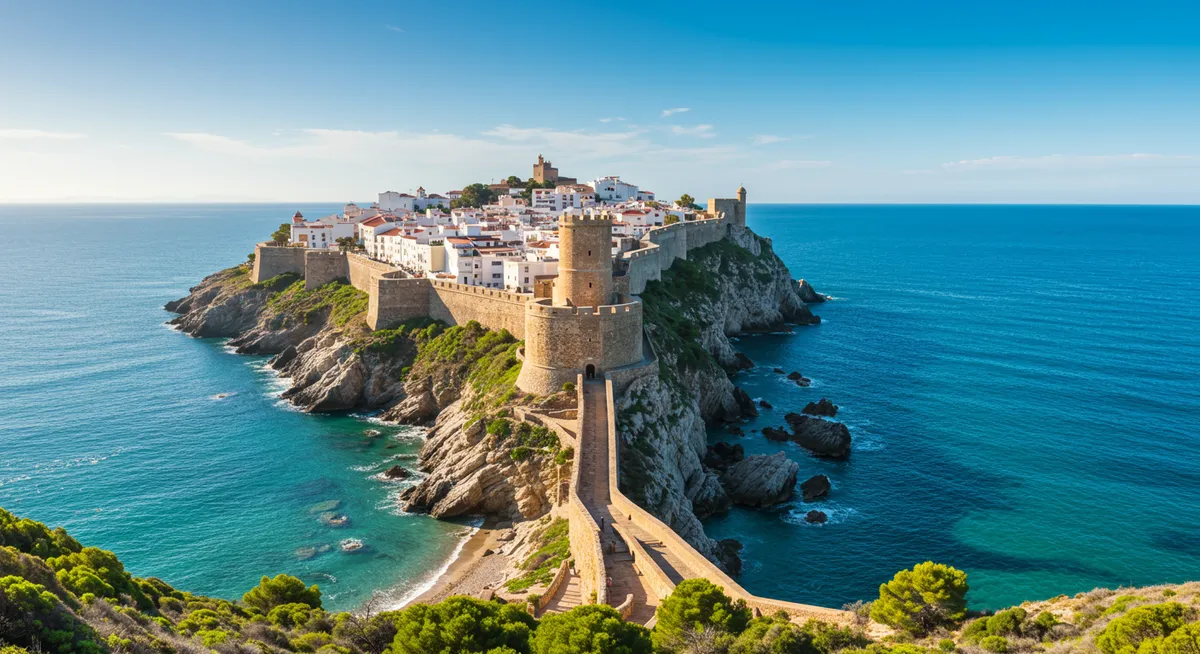
4. Cudillero: Amphitheater of Color
Tucked into a natural amphitheater on Asturias' emerald coast, Cudillero ranks among Spain's most photogenic fishing villages. Its vividly painted houses appear to climb over each other up the steep hillside from the harbor, creating a scene more reminiscent of Italy's Cinque Terre than typical Spanish coastal towns. Shaped by centuries of fishing tradition and relative isolation, this small village maintains authentic maritime customs, distinctive local dialect, and a way of life deeply connected to the cantankerous Cantabrian Sea.
What Makes It Special
- Amphitheater Layout: Houses staggered up a steep hillside around a small fishing harbor
- Colorful Architecture: Vividly painted facades in pink, blue, green, and other bright hues
- Pixueto Dialect: Local fishing community with their own unique dialect derived from medieval times
- Asturian Cuisine: Exceptional seafood combined with the hearty mountain fare typical of Asturias
Local Experiences
Watch the daily fish auction at the small harbor when the fishing boats return with their catch, a tradition continuing for centuries. Climb the hillside via narrow stairways between houses for increasingly spectacular views of the village and coastline. Sample local specialties like merluza a la sidra (hake in cider sauce) or calamares en su tinta (squid in its own ink) at traditional restaurants around the Plaza de la Marina. Visit during the festival of San Pedro (late June), when the entire village celebrates their patron saint with processions, music, and feasting.
Getting There
Cudillero is located on Asturias' coast in northern Spain, about 40 km (25 miles) west of Gijón. It's best reached by car via the A-8 highway, though limited bus service connects it to larger cities. The village center involves climbing steep streets and stairways, so comfortable walking shoes are essential.
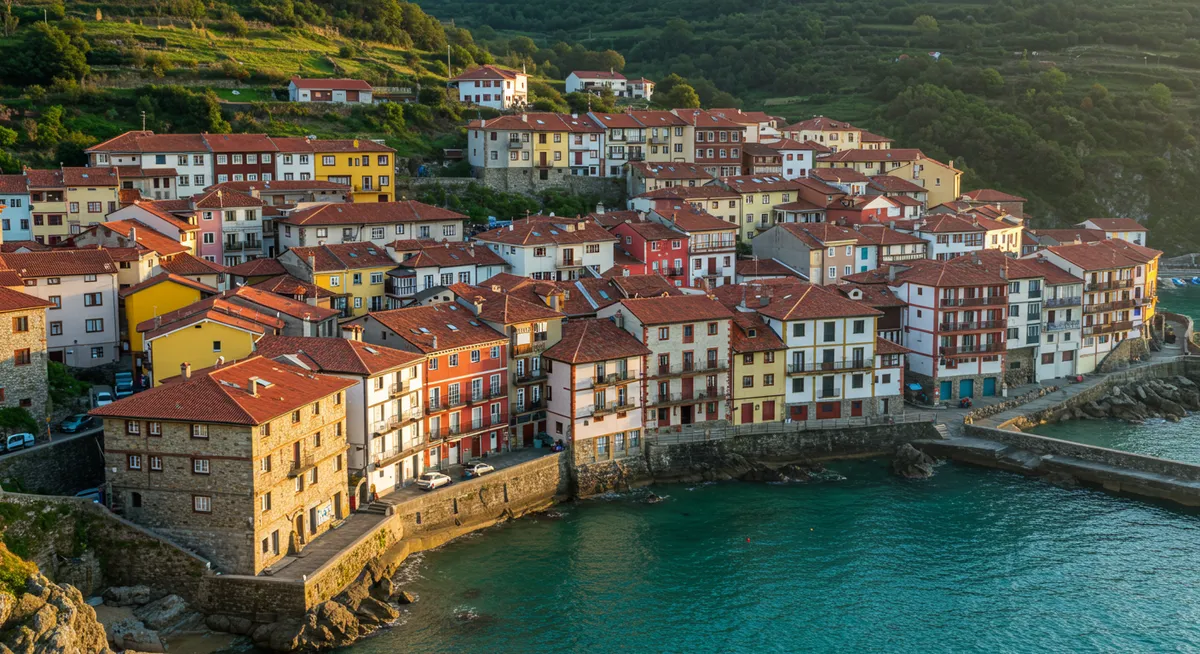
5. Altea: White Crown of the Mediterranean
Rising above the tourist developments of Spain's Costa Blanca, Altea presents a striking contrast to nearby Benidorm's high-rise hotels. Crowned by the iconic blue-domed Church of Nuestra Señora del Consuelo, the old town's pristine whitewashed buildings cascade down the hillside toward the Mediterranean, earning it the nickname "Capital of the White Coast." Despite its proximity to major tourist centers, Altea has maintained its character as an authentic Spanish town and artistic haven where narrow cobblestone streets reveal craft shops, studios, and family-run restaurants.
What Makes It Special
- Emblematic Blue Dome: The church's distinctive ceramic cupola has become an iconic Mediterranean image
- Artistic Community: Long-established colony of painters, writers, and craftspeople
- Perfect White Town: Immaculately maintained whitewashed buildings with flowerpot-lined streets
- Two Distinct Areas: Historic hillside old town contrasting with the relaxed beachfront promenade
Local Experiences
Wander the labyrinthine streets of the historic center, climbing to the Plaza de la Iglesia for panoramic views across the bay and the blue-domed church. Shop for handcrafted ceramics, artwork, and textiles in the many artist workshops and boutiques tucked along narrow lanes. Stroll the palm-lined seafront promenade, with its pebble beaches and many outdoor cafés perfect for people-watching. Dine on local rice dishes like arroz a banda (rice cooked in fish stock) at traditional restaurants, many with terraces offering Mediterranean views.
Getting There
Altea is located on Spain's Costa Blanca in the province of Alicante, about 11 km (7 miles) north of Benidorm. It's accessible by car via the N-332 coastal road or AP-7 highway, and by train on the narrow-gauge line connecting Alicante and Dénia. The historic old town is pedestrianized, requiring an uphill walk from the more modern beachfront area.

6. Vejer de la Frontera: Hilltop White Town by the Sea
Perched dramatically atop a hill overlooking the Atlantic coast of Cádiz province, Vejer de la Frontera combines the allure of Andalusia's famous white towns with proximity to some of Spain's most spectacular beaches. This perfectly preserved medieval village, with its labyrinthine streets and Moorish heritage, stands just a few kilometers from the windswept shores of the Costa de la Luz, offering visitors a remarkable blend of cultural exploration and coastal relaxation rarely found in a single destination.
What Makes It Special
- Moorish Legacy: Perfectly preserved Islamic urban layout with narrow winding streets and interior patios
- Dramatic Setting: Perched 200 meters above sea level with views extending to Morocco on clear days
- Unique Cuisine: Distinctive local dishes influenced by centuries of Arab occupation
- Pristine Beaches Nearby: Close to the unspoiled beaches of El Palmar and Caños de Meca
Local Experiences
Get lost in the maze-like streets of the old town, passing through ancient archways and discovering hidden plazas filled with orange trees and fountains. Visit the restored 15th-century castle with its beautiful gardens and views across the countryside to the Atlantic Ocean. Sample unique local specialties like tortillitas de camarones (shrimp fritters) or atún encebollado (tuna with caramelized onions) at traditional taverns. Take a short drive to El Palmar beach, a 6 km stretch of golden sand known for its surfing conditions and relatively undeveloped character.
Getting There
Vejer de la Frontera is located in Cádiz province in southwestern Spain, about 55 km (34 miles) south of Cádiz city. It's best reached by car, as public transportation options are limited. The historic center is largely pedestrianized, with parking areas around the perimeter of the old town.
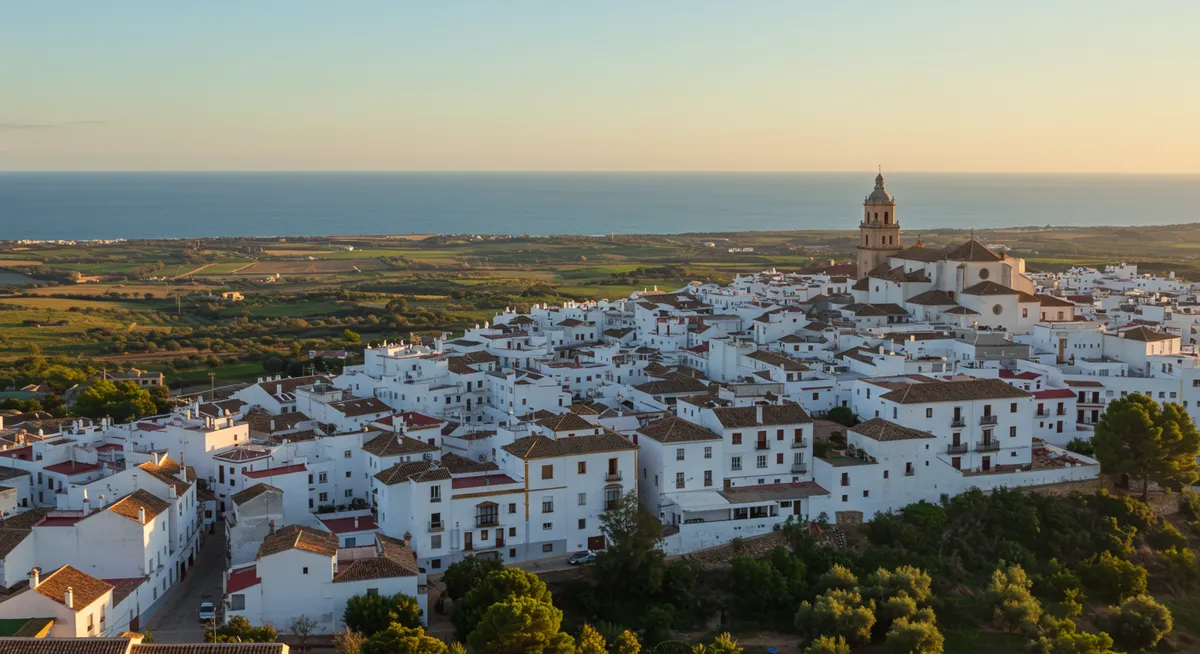
7. Lastres: Fishing Village on a Cliff
Dramatically built on a steep slope overlooking the Cantabrian Sea, Lastres (Llastres in the local Asturian language) presents one of northern Spain's most picturesque coastal villages. Made famous as the filming location for the popular Spanish TV series "Doctor Mateo," this historic fishing community clings to the mountainside, its stone houses descending in stages toward a small, still-active harbor. With its magnificent coastal views, authentic maritime atmosphere, and proximity to both mountains and beaches, Lastres offers a genuine glimpse into the traditional life of Spain's little-visited northern coast.
What Makes It Special
- Vertical Layout: Houses built on an extremely steep hillside with streets that are often stairways
- Mirador del Sueve: Spectacular viewpoint offering panoramas of the village and coastline
- Chapel of San Roque: Historic hermitage perched above the village with stunning sea views
- Active Fishing Port: Working harbor where traditional fishing methods are still practiced
Local Experiences
Wander the steep, winding streets of the old town, discovering viewpoints that frame the village against the Cantabrian Sea. Visit the Clock Tower, built in 1705, and the Church of Santa María de Sábada with its distinctive bell gable. Watch the daily fish auction at the small port when fishing boats return with their catch, particularly during anchovy season. Dine at a traditional sidrería (cider house) to experience the unique Asturian tradition of pouring cider from a height (escanciar) to aerate it, paired with hearty seafood dishes.
Getting There
Lastres is located on Asturias' coast in northern Spain, about 35 km (22 miles) east of Gijón. It's best reached by car via the A-8 highway and local roads, as public transportation options are limited. The village involves navigating steep streets and stairways, so comfortable walking shoes are essential.

8. Mojacar: Moorish White Village by the Mediterranean
Divided between a historic hilltop pueblo and a relaxed beachside resort, Mojacar offers visitors two Spanish coastal experiences in one destination. The ancient village, with its dazzling white buildings and Moorish heritage, perches high above Almería's coast, while several kilometers of beaches and coves stretch along the Mediterranean below. Despite being in Andalusia's Costa del Almería, Mojacar has escaped the overdevelopment that characterizes much of Spain's southern coastline, maintaining its authentic character and the stark beauty of a landscape where mountains meet the sea.
What Makes It Special
- Moorish Architecture: Perfectly preserved Islamic urban design with cubic white buildings
- Dual Character: Historic mountain village and relaxed beach community in one destination
- Ancient History: Archaeological evidence suggests settlement dating back 4,000 years
- Desert Meets Sea: Located near Cabo de Gata Natural Park with its unique semi-desert landscape
Local Experiences
Explore Mojacar Pueblo's labyrinthine streets, passing through Moorish arches and discovering hidden plazas with panoramic Mediterranean views. Look for the Indalo symbol, a prehistoric figure found in nearby caves that has become the emblem of Mojacar and a good luck charm. Visit the Mojacar Artisan Center to see local craftspeople creating traditional ceramics, textiles, and other handicrafts. Explore the 17 km of coastline comprising Mojacar Playa, with its mix of developed beaches and hidden coves ideal for swimming and snorkeling.
Getting There
Mojacar is located in Almería province in southeastern Spain, about 90 km (56 miles) from Almería city. It's best reached by car, though bus service connects it to major cities. A local bus connects the beach area with the hilltop village for those without their own transportation.
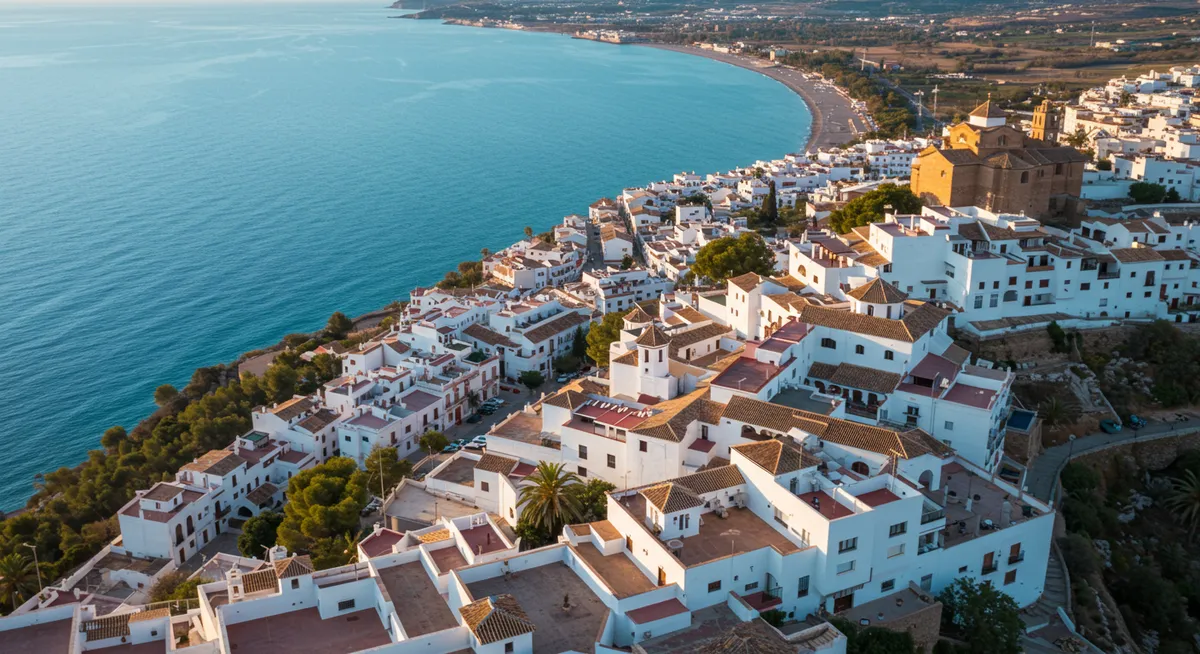
Travel Tips for Visiting Spain's Coastal Hidden Gems
To make the most of your experience exploring these enchanting destinations, consider these practical recommendations:
Best Time to Visit
Late spring (May-June) and early fall (September-October) offer ideal conditions—pleasant temperatures, swimmer-friendly waters, and fewer crowds. July and August bring intense heat, crowded beaches, and significantly higher prices, particularly in southern destinations. Northern coastal towns like Cudillero and Lastres are most enjoyable from June through September, as they can be rainy and cool in other months. Winter visits (November-March) provide a truly local experience in southern regions with mild temperatures, though many restaurants and attractions may have limited hours.
Transportation
A car offers the most flexibility for exploring coastal hidden gems, many of which have limited public transportation connections. Spain's coastal roads range from modern highways to challenging mountain routes, particularly in northern regions and when accessing hilltop villages. Many historic centers are pedestrianized, requiring parking outside town walls or at designated areas. Consider renting a smaller car, as village streets can be extremely narrow and parking spaces limited.
Accommodations
Book accommodations well in advance for summer visits, especially for July and August when demand far exceeds supply in coastal areas. Many towns offer charming boutique hotels in restored historic buildings, often providing more authentic experiences than larger resorts. Consider staying in a casa rural (country house) or apartment rental for longer stays, particularly for families or groups. Be aware that accommodations in historic centers often involve climbing stairs and may not offer amenities like elevators or air conditioning in older buildings.
Dining Customs
Embrace Spanish meal times, with lunch typically served from 2-4 pm and dinner starting no earlier than 8:30 pm, especially in summer. Look for the menú del día (daily set menu) offered at lunchtime in many restaurants, providing excellent value for a three-course meal with wine. In fishing villages, consider dining at simple seafood restaurants near the port for the freshest catch prepared according to local traditions. Reserve tables in advance during peak season, particularly for restaurants with sea views or those recommended in guidebooks.
Pro Tip: Many coastal villages in Spain host vibrant local festivals throughout the summer, often centered around maritime traditions or patron saints. Research festival dates in advance—these celebrations offer authentic cultural experiences but also mean accommodations will be scarcer and more expensive during these periods.
Planning Your Spanish Coastal Village Itinerary
These eight coastal towns represent just a sampling of Spain's hidden seaside treasures. Consider exploring them as part of these regional itineraries:
- Northern Green Coast: Combine Cudillero and Lastres with other Asturian and Cantabrian coastal villages for an exploration of Spain's verdant northern coastline
- Mediterranean Journey: Link Cadaqués, Altea, and Peñíscola with stops at other hidden coves for a route along Spain's eastern shores
- Atlantic Adventure: Connect Combarro in Galicia with Vejer de la Frontera in Andalusia to experience the diverse character of Spain's Atlantic coast from north to south
- Andalusian Circuit: Pair Vejer de la Frontera and Mojacar with other white villages in southern Spain for a journey through Moorish heritage and pristine beaches
For those looking to expand their hidden gem exploration beyond Spain, our guides to villages in Southern France and secret villages of Portugal offer perfect complements to your Iberian Peninsula adventures.
Related Hidden Gem Towns
If you enjoy discovering Spain's coastal villages, you might also appreciate these similar destinations in nearby countries:
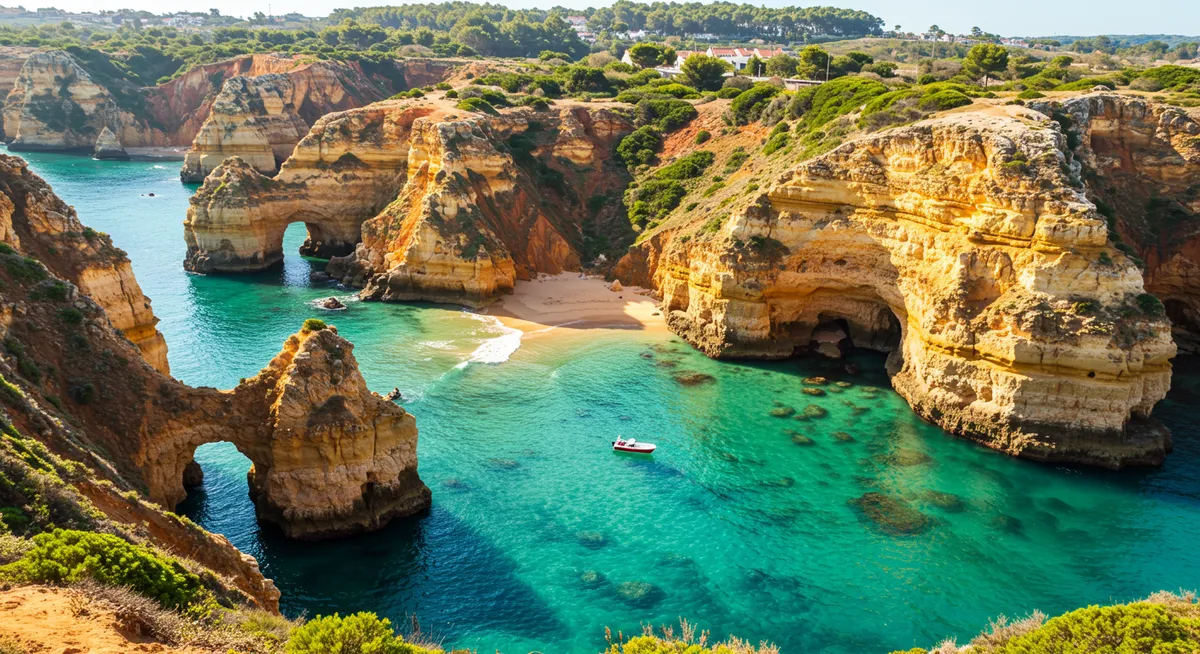
Secret Villages of Portugal
Experience Portugal's charming hidden villages that share Iberian influences and similar coastal beauty to Spain.

Underrated Villages in Italy
Discover Italian coastal gems like Tellaro that offer similar Mediterranean charm to Spain's hidden villages.

Villages in Southern France
Explore villages like Eze with stunning Mediterranean views similar to Spain's coastal hidden gems.
Explore More Hidden Gem Towns
Discover more enchanting under-the-radar destinations across Europe and beyond.